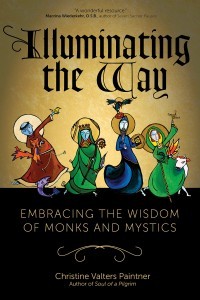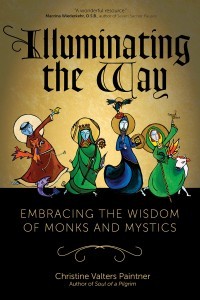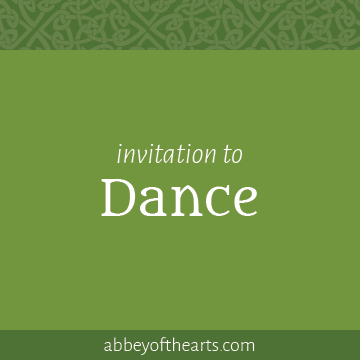Christine Valters Paintner's Blog, page 116
May 3, 2016
Monk in the World guest post: Anne Knorr
I am delighted to share another beautiful submission for the Monk in the World guest post series from the community. Read on for Anne Knorr's reflection on reconnecting with the cycles of the Earth.
The other night my husband and I hiked up to one of our favorite spots in the foothills of Boulder, Colorado we affectionately call the Moon Rock. Our neighbors joined us on the 45-minute trek up the hill with picnic dinners and headlamps in tow. Hiking to watch the moonrise is a ritual we happened onto several years ago when the full moon coincided with my birthday and my husband thought it would be a delightfully fun and unique way to celebrate. It just so happened that this evening was a blue moon, the rare occurrence of a second full moon in the same month. As we sat peering across the horizon, a soft glow appeared just above the horizon, the precursor to the arrival of the moon. We were completely mesmerized as the first sliver of light crept into view and the golden globe began to rise into the evening sky. The sight of the full moon took me back to a time on our boat near the Northwest coast of British Columbia where our every move was tightly linked to the cycles of the earth. I hadn’t realized until that moment how much I missed the profound calm that accompanies being so in sync with nature.
Tides and currents are deeply connected to the cycles of the moon and its gravitational pull. Water ebbs and flows depending on whether the moon is moving towards fullness or fading away. Spring tides (the greatest flow of water) happen on a full moon with water levels changing by as much as twelve feet. Navigating to our chosen destination was closely timed with the ebb and flow of the tides, always striving to have the currents run with us and not against us. Slack tides also played into our decisions when going through narrow passages requiring us to adapt to the ocean’s timing. Falling into this rhythm felt natural, almost like coming home to a place I’ve always known but had forgotten. The earth’s cycles remind me that life is constantly expanding and contracting, growing into fullness then releasing into something new. Indigenous people carry this wisdom, as do farmers, and fishermen, and anyone whose livelihood is linked to the earth. Black Elk, a Native American, described it this way, You have noticed everything an Indian does is in a circle, and that is because the power of the world always works in circles…even the seasons form a great circle in their changing and always come back again to where they were…
About a month after the blue moon experience, a lunar eclipse occurred while I was staying at the Jesuit retreat center near Sedalia, Colorado. Grassy hills surround the property in this rural setting and I was able to walk to a ridge nearby that allowed me to watch the sun set in the west then turn 180 degrees and watch the moon rise in the east. The actual eclipse took hours to come into fullness so I walked back to the retreat house where a hammock offered the perfect place to sit and wait. In the dusk of the evening I could make out the silhouettes of other retreatants scattered across the lawn, each of us silently and reverently watching the moon, as if it held some magical power that captivated us all – we knew it was unlikely we would see this event again in our lifetime. To wait, to watch, and to notice as the cosmic dance unfolded felt like a prayer. Nothing else was required other than to acknowledge the wonder.
It also felt like an invitation to wait, to watch, and to notice the subtle daily, monthly, and yearly cycles that surround me. Being a monk it the world can be as simple as reconnecting with the cycles of the earth and honoring them with my attention – gazing out my window as the sun rises in the morning, savoring the rich colors of fall leaves as I drive across town, listening to the hoot of the owl as I take my morning walk. Right now I am particularly drawn to the lunar cycle and the subtle yet powerful way it influences the dynamics of the ocean, the fish, the magnetic field, and even childbirth. I am reminded that my life is cyclical as well and follows a larger and universal pattern that is constantly moving and changing. It calms me down as I navigate the new seasons of my life and helps me to trust that letting go is a natural part of the circle and energy of life as it comes into fullness, then fades away, then returns once again full circle.
 Anne Knorr is an architect, spiritual director and author of the book, Sacred Space at Home, Architecture with Soul. She has written and lectured about the connection between architecture and spirituality, and continues her practice as a residential architect and spiritual director. Anne lives in Boulder, Colorado.
Anne Knorr is an architect, spiritual director and author of the book, Sacred Space at Home, Architecture with Soul. She has written and lectured about the connection between architecture and spirituality, and continues her practice as a residential architect and spiritual director. Anne lives in Boulder, Colorado.
The post Monk in the World guest post: Anne Knorr appeared first on Abbey of the Arts.
May 1, 2016
Walk the Ancient Paths in Ireland – Join us May 16th for a free call and gifts for early registration by June 30th
Pilgrimage Preview Call
On Monday, May 16th – the feast of Brendan the Navigator – Christine & John Valters Paintner are hosting a free call about their pilgrimages to Ireland. Even if you aren’t planning to join us on a live journey, you might enjoy listening to Christine read some of her poems, lead you on a guided meditation, see some of their images from Ireland, and hear John and Christine both talk about what they love so much about the place they live. Everyone is welcome to join. You can even ask questions, either ahead of time or at the end of the call.
To join the call register here and then log in on May 16th at 8:00 a.m. Pacific / 11 a.m. Eastern / 4:00 p.m. Ireland and UK / 5:00 p.m. Continental Europe (click here to calculate your own time zone) or you can listen to the recording after.
*Special early registration bonus*
Register for a pilgrimage in 2017 by June 30th for special gifts including a signed copy of Christine’s book Soul of a Pilgrim, a set of dancing monk icon cards, and a special gift from the landscape of Ireland mailed to you.
Those who have made a pilgrimage with us before, receive the special gifts AND a €200 discount on future journeys (will reduce to €100 after June 30th).
In 2017 we have several opportunities to join us on the wild west coast of Ireland for a soulful journey in the stunning landscape of this gorgeous place. Join a community of kindred souls for slow wandering in sacred sites and reflecting on your own soul’s deep hunger. Imagine hearing the words of John O’Donohue and other poets each day as you immerse yourself in the Celtic imagination and the power of the elements – wind, sea, stone, and sun.
Please feel free to be in touch with any questions you might have. John and Christine would love to welcome you to the land they call home.
Click here for a calendar of pilgrimage dates>>
The post Walk the Ancient Paths in Ireland – Join us May 16th for a free call and gifts for early registration by June 30th appeared first on Abbey of the Arts.
April 30, 2016
Celebrate the Celtic feast of Beltaine ~ A love note from your online abbess
Dearest monks, artists, and pilgrims,
 In the Celtic Wheel of the Year, today is the feast of Beltaine and the very start of summer. This is an excerpt from our online self-study retreat Sacred Seasons: A Yearlong Journey through the Celtic Wheel of the Year (click link for details and registration):
In the Celtic Wheel of the Year, today is the feast of Beltaine and the very start of summer. This is an excerpt from our online self-study retreat Sacred Seasons: A Yearlong Journey through the Celtic Wheel of the Year (click link for details and registration):
Beltaine (which means bright fire) is another of the cross-quarter days, representing the mid-point between the vernal equinox and the summer solstice and it is often experienced at the height of spring. In Ireland it is considered to be the beginning of summer and the beginning of the light half of the year. We can feel the significant shift in light at this latitude and the days are becoming significantly longer. Temperatures are warmer. Flowering has come to its fullness. Birds are singing in full chorus.
In Ireland the cuckoo birds start arriving from their winter in Africa, and there are music and walking festivals named after its return. The power of nature’s life force returning is celebrated. Two fires were lit and the sheep and cattle were brought to the summer pastures. It is a fire festival of fertility and garlands of flowers are made up in honor of the creative abundance beginning to stream forth from the land.
The theme of Beltane is union of male of female energies to increase this fertility. Couples would go off into the woods to gather flowers the night before and return with hair and clothes rumpled. Upon their return at dawn, they would scatter flowers on the doorways and windowsills as blessing.
This time of year celebrates the rising sap, the fruitfulness of the earth and human beings, and all in the process of ripening toward fullness. We honor the life force at work in the world around us and within us.
A well-known tradition is the Maypole with ribbons and streamers and dancing around it which often ended with a great banquet. The dew of May was thought to hold special properties. Women would bathe in it to renew their complexions. Men would wash their hands in it to increase their skills. Many would walk barefoot in it or roll in the wet grass for healing.
People would go to holy wells and walk the rounds, bless themselves with the water from the well, and hang a strip of their clothing or a ribbon on the tree.
As the growth cycle turns toward summer, this feast calls us to engage in our creative power and ignite the sparks of our life force seeking expression in the world
Join our Sacred Seasons online program for a mini-retreat exploring Beltaine including music, dance, creative expression, contemplation, and reflection on the Christian connections with this feast including May as the month of Mary and the celebration of Pentecost.
Stop by Patheos for my next reflection in the series of Practicing Resurrection where I explore love and peace as holy directions.
With great and growing love,
Christine
Christine Valters Paintner, PhD, REACE
Photo © Christine Valters Paintner
The post Celebrate the Celtic feast of Beltaine ~ A love note from your online abbess appeared first on Abbey of the Arts.
April 29, 2016
Illuminating the Way: new 12-month journey with FREE monthly teleconference
Starts Monday, May 23rd with Francis of Assisi!
 Join us for a FREE 12-month journey through Christine Valters Paintner's newest book Illuminating the Way: Embracing the Wisdom of Monks and Mystics. Each month Christine will host a teleseminar where she will explore some of the themes of the monk and mystic featured, lead a meditation experience, and read one of her poems, as well as offer the opportunity to ask questions. The recording will be available if you can't participate live on the call. This is a wonderful way to move slowly and intentionally through the material. You do need to purchase your own copy of the book to participate but the online journey is free to all of our wonderful email newsletter subscribers.
Join us for a FREE 12-month journey through Christine Valters Paintner's newest book Illuminating the Way: Embracing the Wisdom of Monks and Mystics. Each month Christine will host a teleseminar where she will explore some of the themes of the monk and mystic featured, lead a meditation experience, and read one of her poems, as well as offer the opportunity to ask questions. The recording will be available if you can't participate live on the call. This is a wonderful way to move slowly and intentionally through the material. You do need to purchase your own copy of the book to participate but the online journey is free to all of our wonderful email newsletter subscribers.
Click here to subscribe to our weekly love notes and newsletter>>
The post Illuminating the Way: new 12-month journey with FREE monthly teleconference appeared first on Abbey of the Arts.
Christine is interviewed on The Soul Directed Life
Janet Connor interviewed Christine Valters Paintner about her new book Illuminating the Way. You can listen to the conversation here about embracing your inner monk, visionary, and pilgrim through the inspiration of Thomas Merton, Hildegard of Bingen, and Brendan the Navigator.
The post Christine is interviewed on The Soul Directed Life appeared first on Abbey of the Arts.
April 26, 2016
Monk in the World guest post: Theresa Walker
I am delighted to share another beautiful submission for the Monk in the World guest post series from the community. Read on for Theresa Walker's reflection on waiting, letting go, and opening to creative gifts.
Years ago, I waited anxiously to see if I would get the job I had interviewed for. I wanted the job very much. At last my interviewer called and said, "I'm sorry, but I still can't give you an answer." My spirits plummeted. Disappointment, anxiety, and a worrisome desire to achieve my goal gripped me.
That night I dreamed a woman stood in front of me holding a baby. I reached out my arms and took a step toward the baby I wanted to hold. Baby held up her head, looked at me, and said, "I don't like you." What a crushing remark! I stepped back, and immediately the baby leaped into my arms. I held her.
I took the message to heart. Wait. Wait. And wait. And besides waiting, relax, You can't force the giving of gifts. Truly, I felt at peace. I did not take the dream as a sign I would get the job although I did get the job a few months later and worked for my employer, with ups and downs, for the next twenty years. That dream helped me to move away from clinging to one self-centered desire and offered excellent advice for my life: to practice attentiveness, openness, and vulnerability. These were spiritual practices that would lead to peace of mind and bear fruit no matter what job I had or didn't have.
I used to think of myself as a "private person," but in time this label seemed not quite accurate. Through kind conversations with friends on the spiritual path and in my church community, and practices such as centering prayer, I became aware of how self-protective my privacy could be.
For example, coming down with a severe flu turned out to be an enlightening experience. Although friends and a neighbor offered help, I could not bring myself to accept it. After a few days I dragged myself out of bed and crossed a heavily trafficked city street to a nearby supermarket to buy a few items. I almost passed out in the store. Once safely back in my apartment, the foolishness of trying to hide my need for assistance became apparent, and this led me to a clear, conscious decision to open up more to others, to receive help gratefully, and to strive to give help with no agenda.
The spiritual practice that now challenges me the most is the practice of creativity, especially through the tools of writing and painting. Endless creativity is a grace, a gift from birth, but it has taken me a long time to believe the treasure is meant for me. Why wouldn't it be? Being human is.the only requirement for tapping into creativity. Painting, which I started doing in midlife, and writing, which I've enjoyed since childhood, take me far away from protecting myself and deeply into communion. In writing and painting I learn from many teachers, share with fellow creators, and uncover much that is hidden and needs to be revealed. In the practice of creativity, gifts abound, and with abundance comes gratitude, generosity, and service. "
 Theresa Walker writes, paints, and works in university press publishing in Washington, DC. She is a registered SoulCollage® facilitator and holds a certificate as an expressive arts facilitator. She has led groups in adult education settings and has shown her paintings in several group and solo exhibits. She completed the leading contemplative prayer groups program at the Shalem Institute for Spiritual Formation.
Theresa Walker writes, paints, and works in university press publishing in Washington, DC. She is a registered SoulCollage® facilitator and holds a certificate as an expressive arts facilitator. She has led groups in adult education settings and has shown her paintings in several group and solo exhibits. She completed the leading contemplative prayer groups program at the Shalem Institute for Spiritual Formation.
The post Monk in the World guest post: Theresa Walker appeared first on Abbey of the Arts.
April 25, 2016
Illuminating the Way: Embracing the Wisdom of Monks and Mystics is now available!
 Illuminating the Way takes you on a journey through your inner life accompanied by twelve great monks and mystics from the Christian tradition. Each figure invites you to discover the energy and potential of a particular archetype–the inner sage in Benedict; the inner visionary in Hildegard of Bingen; and the inner orphan in Dorothy Day. From the prophet Miriam of the Hebrew Scriptures to twentieth century monk Thomas Merton, Paintner offers an array of challenging and enlivening models to explore.
Illuminating the Way takes you on a journey through your inner life accompanied by twelve great monks and mystics from the Christian tradition. Each figure invites you to discover the energy and potential of a particular archetype–the inner sage in Benedict; the inner visionary in Hildegard of Bingen; and the inner orphan in Dorothy Day. From the prophet Miriam of the Hebrew Scriptures to twentieth century monk Thomas Merton, Paintner offers an array of challenging and enlivening models to explore.
Christine is beloved by readers for her creative practices, guided meditations, and beautiful prayers and poems, and she has included all of these elements in her new book to further explore the image associated with each mystic. Her insightful reflections on key selections of each mystic's writings will help you gain greater self-knowledge and experience a deeper encounter with God.
"In this creative work Christine Valters Paintner offers us a pilgrimage through the lives of sages, healers, mystics, visionaries, and more—inviting us to feast on their wisdom and explore how their gift of life can illuminate the way for us. This is a wonderful resource and I joyfully recommend it." —Macrina Wiederkehr, O.S.B., Author of Seven Sacred Pauses
Order from your local bookseller or click here to order on Amazon>>
The post Illuminating the Way: Embracing the Wisdom of Monks and Mystics is now available! appeared first on Abbey of the Arts.
April 23, 2016
Embrace the wisdom of your inner orphan ~ A love note from your online abbess
Dearest monks, artists, and pilgrims,
Illuminating the Way: Embracing the Wisdom of Monks and Mystics will be released very soon! In my newest book I explore twelve monks and mystics and how each of them invites us into a deeper connection to our own inner multitude, sometimes described as archetypal energies.
 Last week I shared an excerpt from my reflection on the Sovereign. This week I share from perhaps my favorite archetype of all, that of the Orphan, the tender and vulnerable part of ourselves we so often push away:
Last week I shared an excerpt from my reflection on the Sovereign. This week I share from perhaps my favorite archetype of all, that of the Orphan, the tender and vulnerable part of ourselves we so often push away:
The Orphan appears across myths, fairy tales, and popular culture, think of little Orphan Annie, Cinderella, Dorothy, and Harry Potter. The Genesis story of the Garden of Eden is a primal orphan myth explaining where our experience of being exiles arises. Jesus experiences utter abandonment on the cross.
The fundamental experience of the Orphan is abandonment, feeling like an exile, and longing for an experience of being at home. The Orphan archetype in each of us is activated by all the experiences in which the child in us feels abandoned, betrayed, victimized, neglected, or disillusioned. We are all orphaned in one way or another simply because we are raised by parents with their own wounds and somewhere along the way they have orphaned us – we each have an inner orphan.
While our first instinct may be to run when our inner feelings of need and loneliness arise, the central task of the Orphan is to feel this pain of unmothered child. Ideally we do this hard work from a place of strength and feeling good rather than waiting until we feel awful. We are invited to face our experiences of pain and disillusionment. The Orphan calls us to wake up, let go of our illusions, and face painful realities. We all have losses and catastrophes, we all carry grief that has gone unmourned, that has been pushed away.
The Orphan can also help to crack open our intuition and empathy. Those who suffer much in conscious ways are often able to offer that as gift back to the community. The Orphan also invites us into an interdependence with others as we realize that we are all wounded in some way.
Ultimately the Orphan learns that it is the source of power to face one’s victimization and limitations and to feel fully the pain caused by them. Conscious suffering is the gateway to our own spiritual awakening and maturity. Doing so frees us up to work together to create a better world. The healing begins when we really feel the pain and reality of our orphaning experiences and it progresses to recognizing how we have denied part of ourselves. The gift of Orphan is to connect to our own wounding and to find safe spaces to share it and to bond and create relationships of mutual love and care.
How might you welcome in your own inner Orphan and let her or him know that vulnerability and tenderness are invited to make a place inside.
Stop by Patheos for the next in my series of reflections on Practicing Resurrection and the return to love.
With great and growing love,
Christine
Christine Valters Paintner, PhD, REACE
Photo © Christine Valters Paintner
The post Embrace the wisdom of your inner orphan ~ A love note from your online abbess appeared first on Abbey of the Arts.
April 21, 2016
Invitation to Dance: Flowers Appear on the Earth
 We continue our theme this month from our Community Lectio Divina practice with the Song of Songs passage about spring arriving and continued with this month's Photo Party and Poetry Party.
We continue our theme this month from our Community Lectio Divina practice with the Song of Songs passage about spring arriving and continued with this month's Photo Party and Poetry Party.
I invite you into a movement practice. Allow yourself just 5 minutes this day to pause and listen and savor what arises.
Begin with a full minute of slow and deep breathing. Let your breath bring your awareness down into your body. When thoughts come up, just let them go and return to your breath. Hold this image of "Flowers return to the earth" as the gentlest of intentions, planting a seed as you prepare to step into the dance. What might this mean for you?
Play the piece of music below (“Dream” by Priscilla Ahn) and let your body move in response, without needing to guide the movements. Listen to how your body wants to move through space in response to your breath. Remember that this is a prayer, an act of deep listening. Pause at any time and rest in stillness again.
After the music has finished, sit for another minute in silence, connecting again to your breath. Just notice your energy and any images rising up.
Is there a word or image that could express what you encountered in this time? (You can share about your experience or even just a single word in the comments section below or join our Holy Disorder of Dancing Monks Facebook group and post there.)
If you have time, spend another five minutes journaling in a free-writing form, just to give some space for what you are discovering.
To extend this practice, sit longer in the silence before and after and feel free to play the song through a second time. Often repetition brings a new depth.
The post Invitation to Dance: Flowers Appear on the Earth appeared first on Abbey of the Arts.
April 19, 2016
Monk in the World guest post: Shawn Kafader
I am delighted to share another beautiful submission for the Monk in the World guest post series from the community. Read on for Shawn Kafader's reflection on monastic service and retreat:
I have felt the sense of God’s presence since the earliest memories of my life. As a child I loved to attend church, listen to the stories of the Bible, and share time with God in prayer. By the time I was a teen I knew that I would offer my life to God in some form of vocational ministry. Not always the smoothest of journeys, I can look back knowing that every scene has added a splash of color culminating in a beautiful dance with God.
My mind is filled with spiritual mentors and companions enriching my journey with God. Pastors and priests, religious and lay, teachers and spiritual directors, friends and strangers, all acting as co-strugglers in uncovering the ever-deepening levels of my contemplative life. A youth pastor inviting me into the world of silent meditation; a college bible study leader challenging me to listen more deeply to God’s Word; a spiritual director encouraging me to attend a Centering Prayer workshop; a religious sister opening the world of journal keeping; a spiritual companion suggesting dreams may speak to my daily life; a friend calling me to create spiritual art expressing my encounters with God; a fellow Monk in the World offering me a ministry opportunity offering my gifts and talents to meet a few needs in the world. These, and so many more, used their passions to call my passions forth.
I currently serve on the Chaplain staff of a large continuous care retirement community. The community was founded in the Christian tradition and has grown over its history into a community of many expressions of faith. Much of my work takes place with individuals. My mantra is, “I am here to minister to you in your faith tradition.” A passion for ecumenical Christian work has blossomed into a rich inter-faith ministry. Monastic contemplative spirituality lends itself to this kind of work. Many of our traditions share some kind of prayer hours throughout the day. Most traditions use some kind of prayer beads assisting us to plunge the depths of the spirit. All can prayerfully choose colors to express spiritual art. If we can do nothing else together, we can sit in the sacredness of silence, listening for the voice of the Divine deep within our hearts. My ministry confirms the fact that although I deeply love my own Christian tradition, those of different faith traditions share much more in common than I once thought possible.
A highlight of my day comes when I can retreat from interaction with others to my office at work or my prayer room at home. If only for the briefest of moments I am surrounded by icons of saints, the symbols of Christ’s life, death and resurrection, prayer beads slipping through my fingers, the familiar words of the Psalms and the renewing peace of sacred silence. Like an electronic device needing to recharge, these moments of retreat allow my generous monastic spirit to take in some nourishment from the One who sustains each moment of life. To be creative in my work, I must take the time with my Creator.
I offer you a recent sacred art creation entitled “Eucharist.” My greatest desire at this time of my life is to feed on the presence of Christ in the Eucharist. As a Monk in the World I desire the Eucharist as often as I can receive. I love to go on retreat where I can daily gather at the table of Christ, often finding the time to linger in the chapel pondering how this feeding represents only a glimpse of how God has fed me throughout my journey and will continue to feed me through all eternity. How great is God’s love for me and the world.
 Shawn Kafader, M.Div., MA, D.Min., LCPC is an ordained non-denominational minister and licensed clinical professional counselor. He serves on the chaplain staff of Friendship Village of Schaumburg, Schaumburg, IL where he ministers to the needs of seniors and supervises mental health and art therapy interns. Shawn enjoys offering contemplative prayer retreats on various topics, wanders in nature, creating mandala art and writing poetry. He and his wife Barbara live in Mount Prospect, IL and are the parents of two young adult children.
Shawn Kafader, M.Div., MA, D.Min., LCPC is an ordained non-denominational minister and licensed clinical professional counselor. He serves on the chaplain staff of Friendship Village of Schaumburg, Schaumburg, IL where he ministers to the needs of seniors and supervises mental health and art therapy interns. Shawn enjoys offering contemplative prayer retreats on various topics, wanders in nature, creating mandala art and writing poetry. He and his wife Barbara live in Mount Prospect, IL and are the parents of two young adult children.
The post Monk in the World guest post: Shawn Kafader appeared first on Abbey of the Arts.




